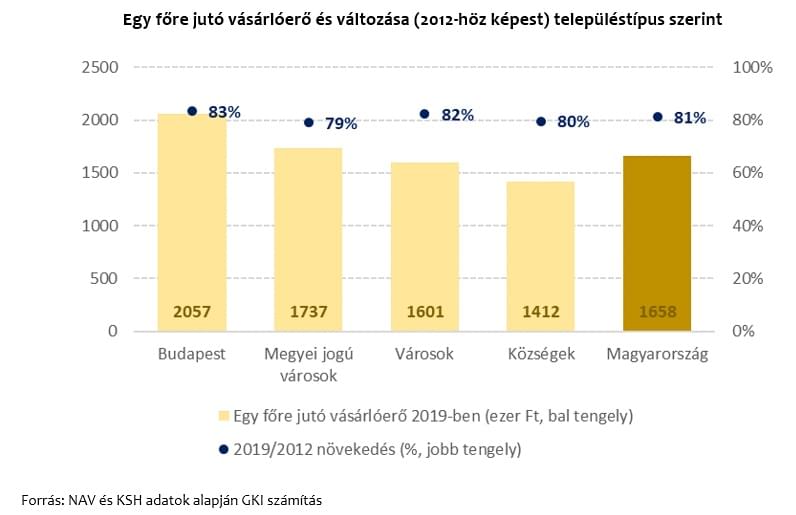Growth of purchasing power in Hungarian settlements between 2012 and 2019

During the estimates, we used the corresponding data series of the NAV and the KSH (net earnings, pensions, entrepreneurial income, municipal benefits, etc.). In 2019, the purchasing power per capita in Hungary was almost 1.7 million forints. However, there were large differences between villages, towns, county towns, and districts. In Budapest, the purchasing power per capita was nearly 2.1 million HUF ie 24 percent higher than the national average. Within the capital, the 12th district leads with 3.4 million HUF, fiollowed by the 2nd district with 3.3 million HUF, while at the end of the line we can find the 8th district with 1.4 million HUF.
Related news
Perceived price increase index remains high
🎧 Hallgasd a cikket: Lejátszás Szünet Folytatás Leállítás Nyelv: Auto…
Read more >The GKI business climate index closed 2025 at a one and a half year high
🎧 Hallgasd a cikket: Lejátszás Szünet Folytatás Leállítás Nyelv: Auto…
Read more >This is how humans and AI work together – the artificial intelligence revolution in the workplace
🎧 Hallgasd a cikket: Lejátszás Szünet Folytatás Leállítás Nyelv: Auto…
Read more >Related news
Hungarian Confectionery Manufacturers Association: trends in 2025 and prospects for 2026
🎧 Hallgasd a cikket: Lejátszás Szünet Folytatás Leállítás Nyelv: Auto…
Read more >Fidelity Outlook 2026: Who will bring the pick and shovel to artificial intelligence?
🎧 Hallgasd a cikket: Lejátszás Szünet Folytatás Leállítás Nyelv: Auto…
Read more >This is how the lives of sole proprietors will change from January 1: the individual tax-free limit will increase to 20 million forints, SZOCHO will be transformed
🎧 Hallgasd a cikket: Lejátszás Szünet Folytatás Leállítás Nyelv: Auto…
Read more >






